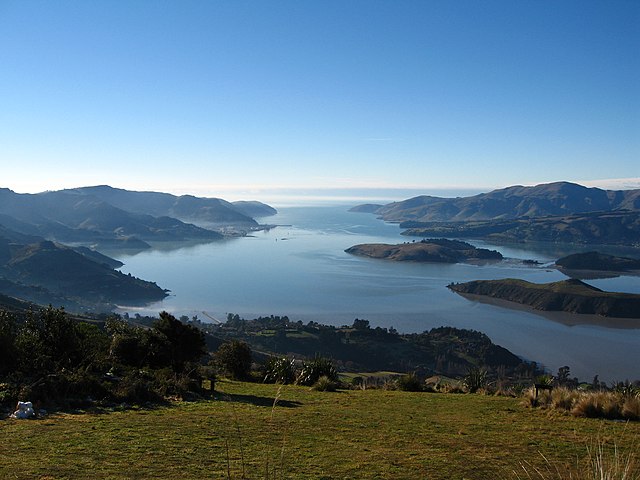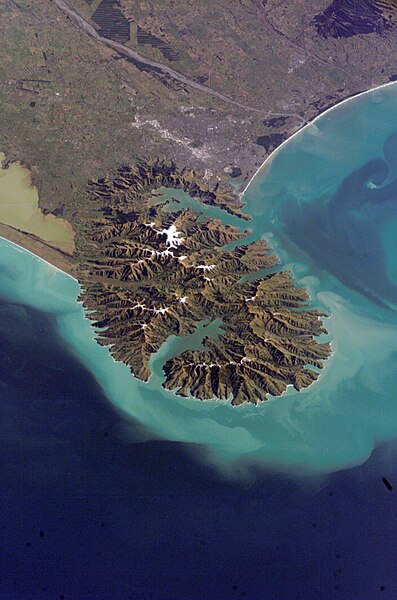Ripapa Island, also known earlier as Ripa Island, located just off the shore of Lyttelton Harbour, has played many roles in the history of New Zealand. A Māori fortified pā there played a key role in an internal struggle for the South Island Ngāi Tahu tribe in the early 19th century. Between 1873 and 1885, the island hosted a quarantine station, which was also used as a temporary prison for members of the Parihaka Māori settlement in Taranaki. Fort Jervois was built in 1886 as part of system of defences against a feared Russian invasion. The fort was in military use until the end of World War I, and again during World War II. It is the most complete Russian-scare fort still existing in New Zealand.
Fort Jervois
Derelict Armstrong guns and emplacements
8-inch Armstrong gun mechanism
Lyttelton Harbour / Whakaraupō is a major inlet on the northwest side of Banks Peninsula, on the coast of Canterbury, New Zealand; the other major inlet is Akaroa Harbour, which enters from the southern side of the peninsula. Whakaraupō enters from the northern coast of the peninsula, heading in a predominantly westerly direction for approximately 15 km (9.3 mi) from its mouth to the aptly-named Head of the Bay near Teddington. The harbour sits in an eroded caldera of the ancient Banks Peninsula Volcano, the steep sides of which form the Port Hills on its northern shore.
Lyttelton Harbour / Whakaraupō as viewed from near the Sign of the Bellbird
A view of Lyttelton Harbour, taken from Orton Bradley park
Lyttelton Harbour (right / northwest) and Akaroa Harbour (left / south) in the Banks Peninsula Volcano, viewed in 2006 from the International Space Station
Lyttelton Harbour as seen from Mount Cavendish (2005)







